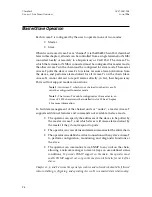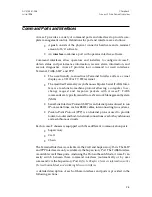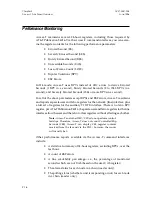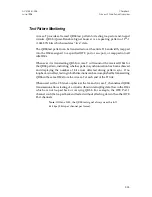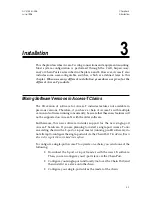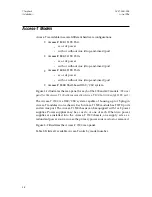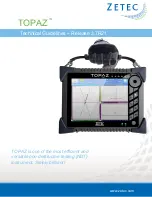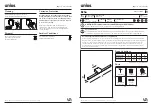
Line/Aux Alarms
Alarms for the Line and Aux ports are:
•
Bipolar Violations (BPVS):
A bipolar violation occurs when con-
secutive ONES pulses have the same polarity. This alarm is registered
at the Access-T when the BPV threshold, defined by the operator, is
exceeded. The threshold is a user-specified BPV rate over a 15-minute
period. The
BPVS
alarm ends when a 15-minute interval has an error
rate better than the specified threshold.
•
Receiving Yellow Signal (YELLOW):
Access-T is receiving Yellow
Signal (indicating that far-end equipment has declared Loss of Sync).
•
Receiving Alarm Indication Signal (AIS):
Access-T is receiving
unframed All ONES (AIS, also known as Blue Signal), generally
indicating a T1 DTE loss of signal at the far end).
•
Unavailable Signal State (USS):
Access-T declares an Unavailable
Signal State after 10 consecutive seconds of Severely Errored Sec-
onds (SES). The
USS
alarm ends after 10 consecutive seconds which
are not SES.
•
Loss of Signal (SIGNAL LOSS):
Access-T declares Loss of Signal if
it receives 175
±
75 consecutive ZEROS. A Loss of Signal alarm ends
when a single ONE is detected.
•
Errored Seconds (ES):
An ES alarm occurs when the user-specified
ES threshold is exceeded. The threshold is a user-specified number of
Errored Seconds (1 to 399) over a user-specified period of 1 to 15
minutes.
•
Loopback Override (LOOP):
Access-T is in loopback and receives an
overriding loopback command from the network (LINE only).
•
Loss of Sync (SYNC LOSS):
Access-T declares Loss of Sync if it
loses framing sync (2 out of 5 consecutive framing bits in error) on
the received T1 signal for at least 2.5 seconds. Access-T transmits
Yellow Signal to the network during Loss of Sync (unless Yellow
Signal generation is disabled). Resynchronization (which requires
detection of a valid 10-bit framing pattern) takes under 10 millisec-
onds once a properly framed signal is received. A Loss of Sync alarm
ends when resync occurs.
Chapter 2
ACST-0351-005
Access-T Functional Overview
June 1996
2-18

